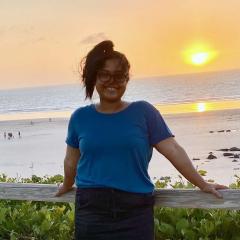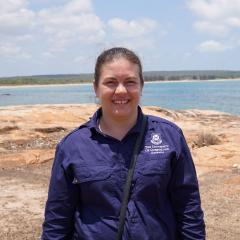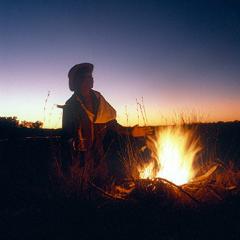About the writer: Dr Smita Chaliha, is a Research Officer for the Centre for Nutrition and Food Sciences at the Queensland Alliance for Agriculture and Food Innovation (QAAFI). Dr Chaliha is originally from the North-eastern state of Assam in India, and has been living in Australia since 2006. Dr Chaliha has been working on Australian native foods since 2010. She was also the first PhD student studying the nutritional and bioactive potential of Kakadu plum (Terminalia ferdinandiana), a well known Australian native fruit. This blog documents her experience while on a field trip to the Kimberley regions of Broome, Western Australia from 26 January to 2 February 2020.
Day 1: January 26, 2020
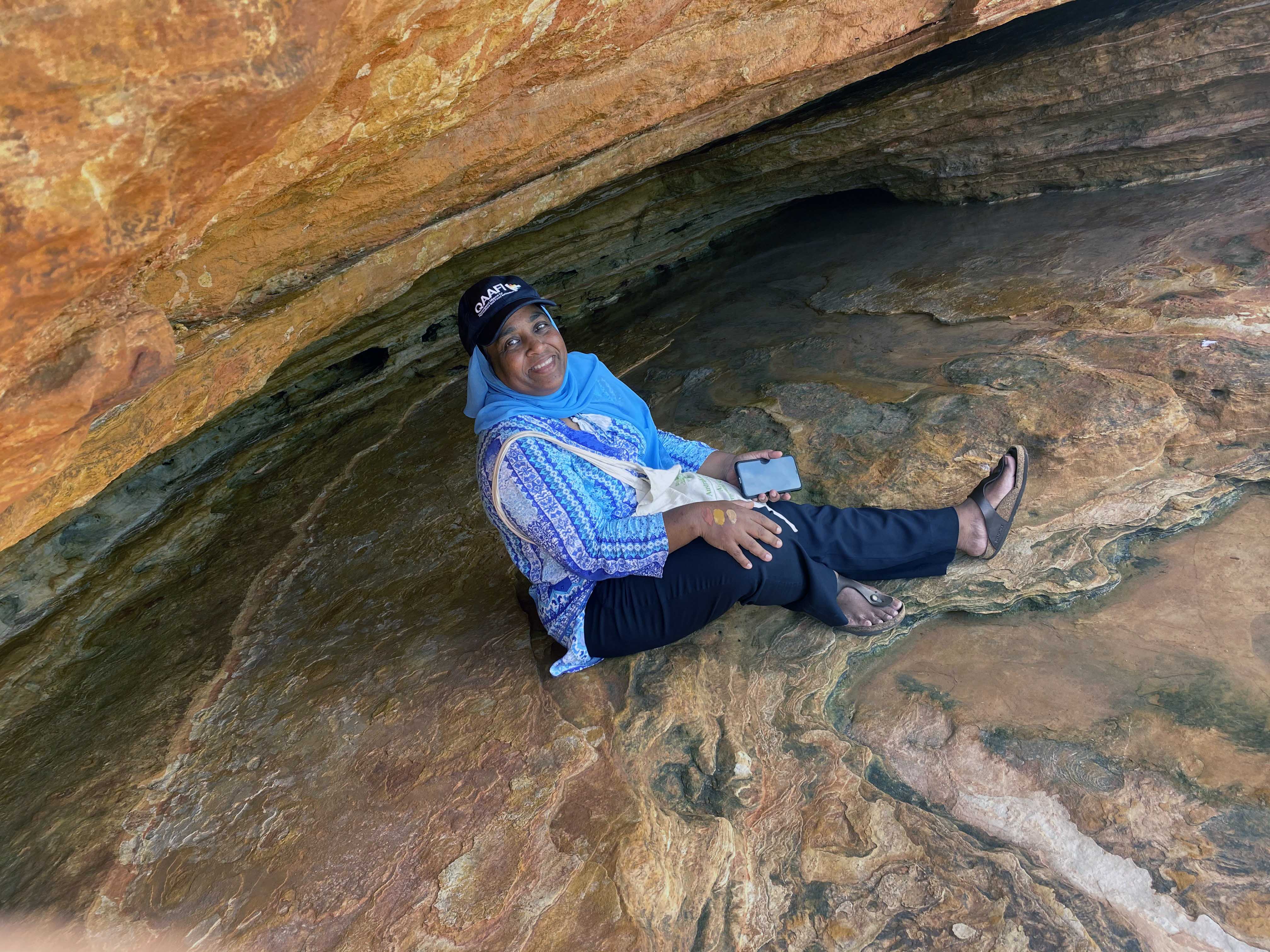
My journey starts on the dawn of 26 January 2020. It’s a bright, balmy morning, one of those mornings that tells you that today is going to be awesome. I am on my way to Broome, WA, on a field trip. My first field trip to harvest and collect Gubinge/Kakadu plum samples as part of my CRC-NA project. I have been working with Kakadu plum for the last 5-6 years, and now I will get to see the land and the people that grow these amazing trees. I can’t wait !!! Soon, I am joined by my team which includes: A/Prof Yasmina Sultanbawa (Directors of ARC Uniquely Australian Foods, the project leader and my supervisor), Eshetu Bobasa (PhD candidate researching Kakadu plum) and Oladipupo Adiamo (PhD candidate researching Wattle seed).
It’s almost 2:30 pm when we land in Broome on 26th January. I can feel the heat as soon as I get down from the plane. The humidity makes me feel like I am back in my home in India. One thing I notice immediately, people here are extremely friendly and kind. They seem to have time to help you, listen to you. In the small cosy airport of Broome, as we wait to collect our baggage, we meet Prof Peter Botsman (Honorary Fellow, School of Social and Political Sciences, University of Melbourne), who is one of our CRCNA research collaborators. He will be joining us in our week-long field trip.
On our way to Cocos Bungalows, our temporary home for this week, we get to see Broome a bit more. The taxi driver is originally from USA, she came as a backpacker 18 years ago and fell in love with Broome. She talks about the lovely people here as she changes the radio to Radio Goolarri 99.7 FM. We will soon realize, how significant is ‘Radio Goolarri’ for the people of Broome and WA. On the short ride to our accommodation, we see rows of Boab trees and roads that are red. She tells us, there are no traffic lights in Broome only roundabouts. We notice that too. Eshetu tells us he feels like he is home. I know that feeling. There is something about the Broome air that makes me feel very at home.
Terry Lewis, our host at the Cocos Bungalows takes us to Woolworth in his car and helps us with our shopping. He also takes us on an impromptu tour of the town. Once again we are pleasantly surprised by the kindness of everyday people of Broome. In the evening five of us have a chat about our expectations from this trip, over our home cooked dinner of pasta and share stories from our lands.
That night when I go to bed, I am feeling truly grateful for this chance of being here in Broome, with my amazing team.
Day 2: January 27, 2020
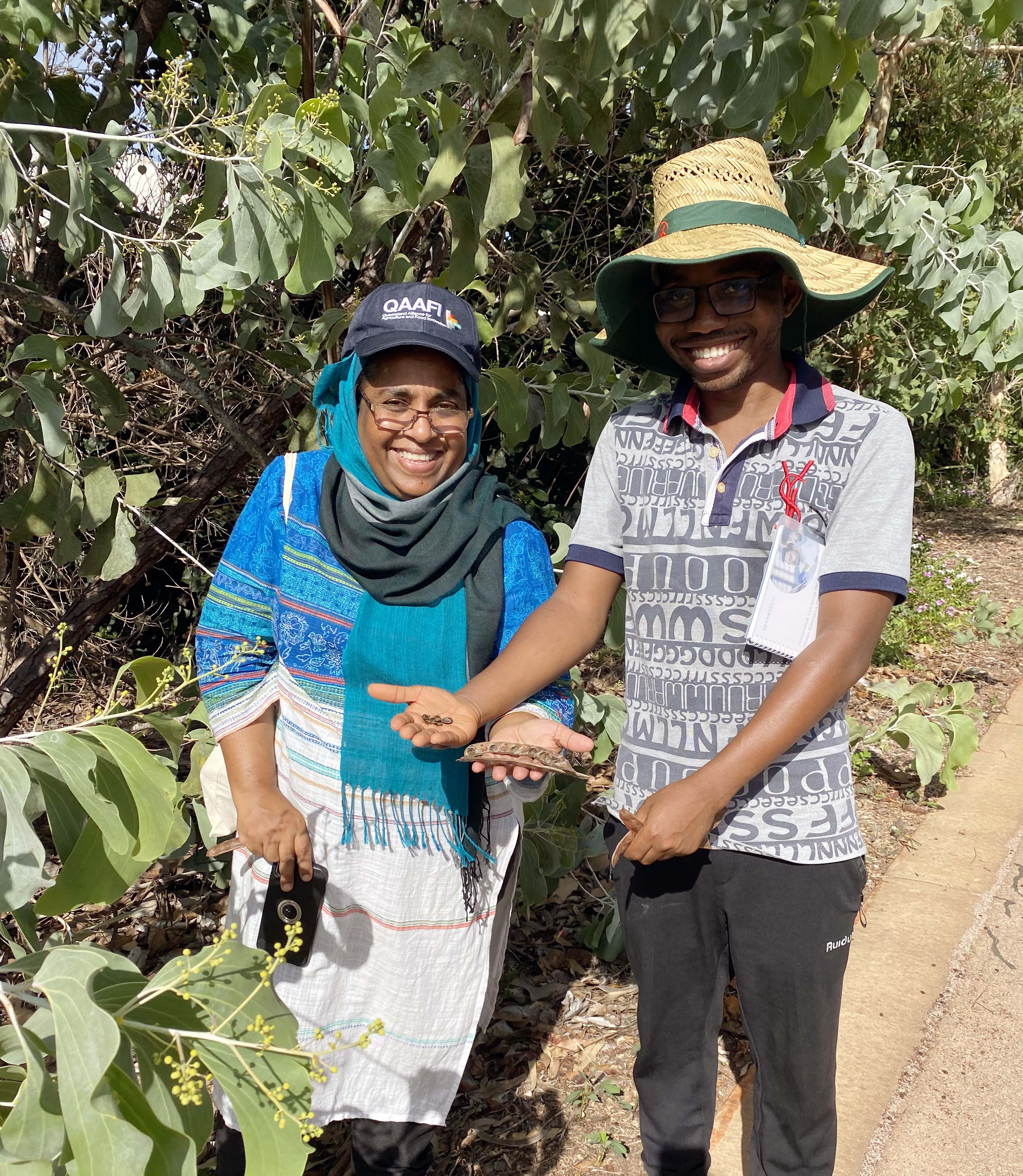
Day 2 in sunny Broome starts with breakfast. Today we have a CRC-NA group meeting. Soon we are joined by Paul Lane (director of The Kimberley Institute Ltd), Lizzie Webb and Jacqui Bell (from Kindred Spirit Enterprises) at our cottage. We discuss the project updates and next milestones.
After a quick group lunch, we go to meet Tom Harley (Amateur ecologist and horticulturalist and CEO of Kimberley Environmental Horticulture Inc.). He takes us to see gubinge (common name for Kakadu plum in WA) and wattle seed trees. Adiamo is able to harvest a few different species of Wattle seed. And we get to see the beautiful landscape of Broome. In the evening, we take a stroll on the Cable beach. We take in the beauty of the turquoise water, pristine white sand and the technicolour evening sky. I try to capture the beauty of this moment and I share them with my family wishing they could be here with me to experience this.
It’s an early night for us all, as the next day is a big one – gubinge harvesting in the Karajarri country.
Day 3: January 28, 2020

The days starts bright and early. Soon after a quick breakfast, we head on to the Karajarri country. We meet Comalie Manolis (the Strategic Projects Manager of Karajarri Traditional Lands Association), Amy King (Karajarri Elder and Comalie’s grandmother), rangers, and few members of Bidydanga community. Amy reminds me of my late ‘aaita’ (grandmother). When she talks about how some people have striped and harmed trees and I can feel her pain. The connection to their country is so deep I can feel it in my bones.

It is a hot day, but everybody is in high spirits. We harvest our samples and train the rangers on tagging trees. We finish just before lunch time, we have a group lunch together. We also get to taste some ‘yummy’ and nutritious wattleseed and Kakadu plum bun sandwiches!!! These buns were formulated by QAAFI, UQ and now are produced by Karen Sheldon Catering. After lunch, the elders tell us to visit the Kunturunkarra (Mangroves) of Karajarri Country and give us directions on how to get there. Once again the untouched natural beauty leaves me speechless. We spend some lovely time there but soon we need to head home to Broome. That evening we are too tired to do anything. We have a quick dinner and call it a night. Despite the tiredness, I am feeling content. I dream of the mangroves, the sand dunes and my aaita that night.
Day 4: January 29, 2020
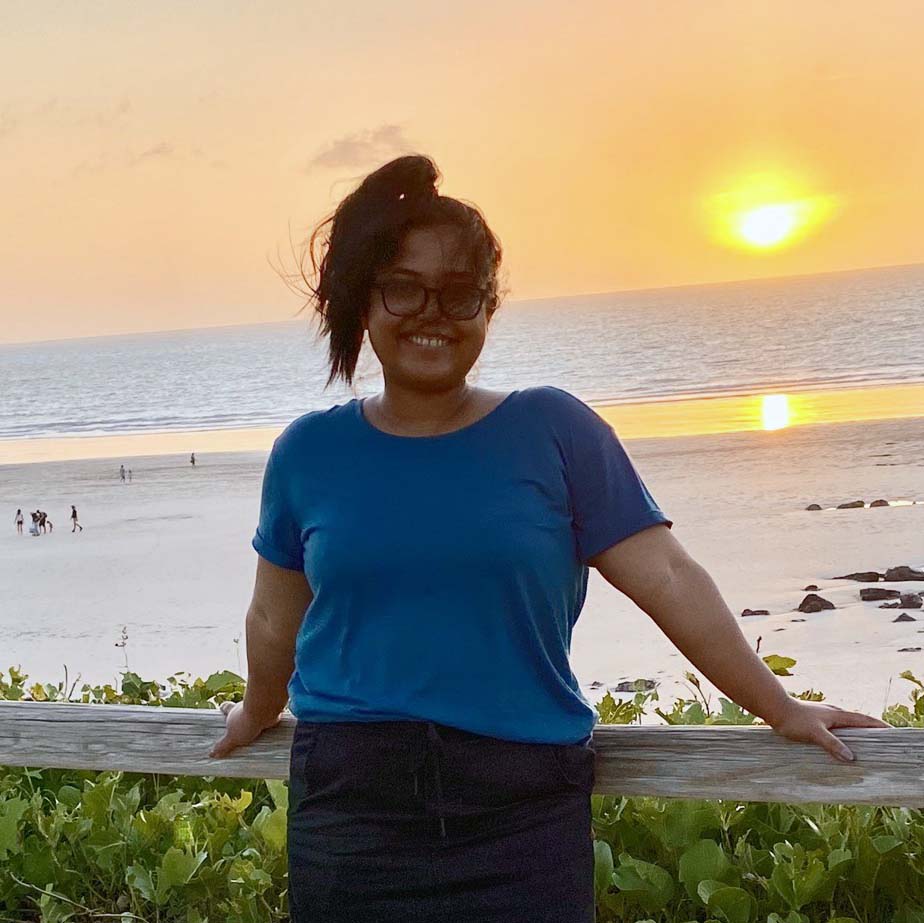
Another early start today. We are heading out to Derby, 2h 30 min journey from Broome to meet Ben Burton of Emma Nguda Aboriginal Corporation. Before the journey, Peter tells us jokingly, ‘remember when you are in Derby, you have to say Derby is prettier than Broome’. When we meet Ben, Yasmina says it and Ben laughs. He said we have been trained. He takes to on a tour of the bushland where they are staring up on few different projects.
As we try to navigate through the dirt road, Ben’s car gets stuck on a fallen tree. This creates a mini traffic jam of our 3 cars in the middle of nowhere. After a group effort finally Ben manages to free his car. As there is not enough room to take a U-turn Peter has to reverse the car fair bit so that we can make a U-turn. After a number of expert manoeuvring, we manage to turn our car and give enough space for the other 2 cars to do the same. Once we got out of the bushes, we realized during the reversing process we lost the ‘side step’ of our 4wd. Peter drives into the bushland again and manages to successfully retrieve the lost part.
We are starving at this point and head off to the ‘Spinifex Restaurant’. After a great lunch and enough cold water, we are refreshed and ready to head back to Broome. We head straight to Cable beach to enjoy the sunset. And what a sight this was !!!
Day 5: January 30, 2020
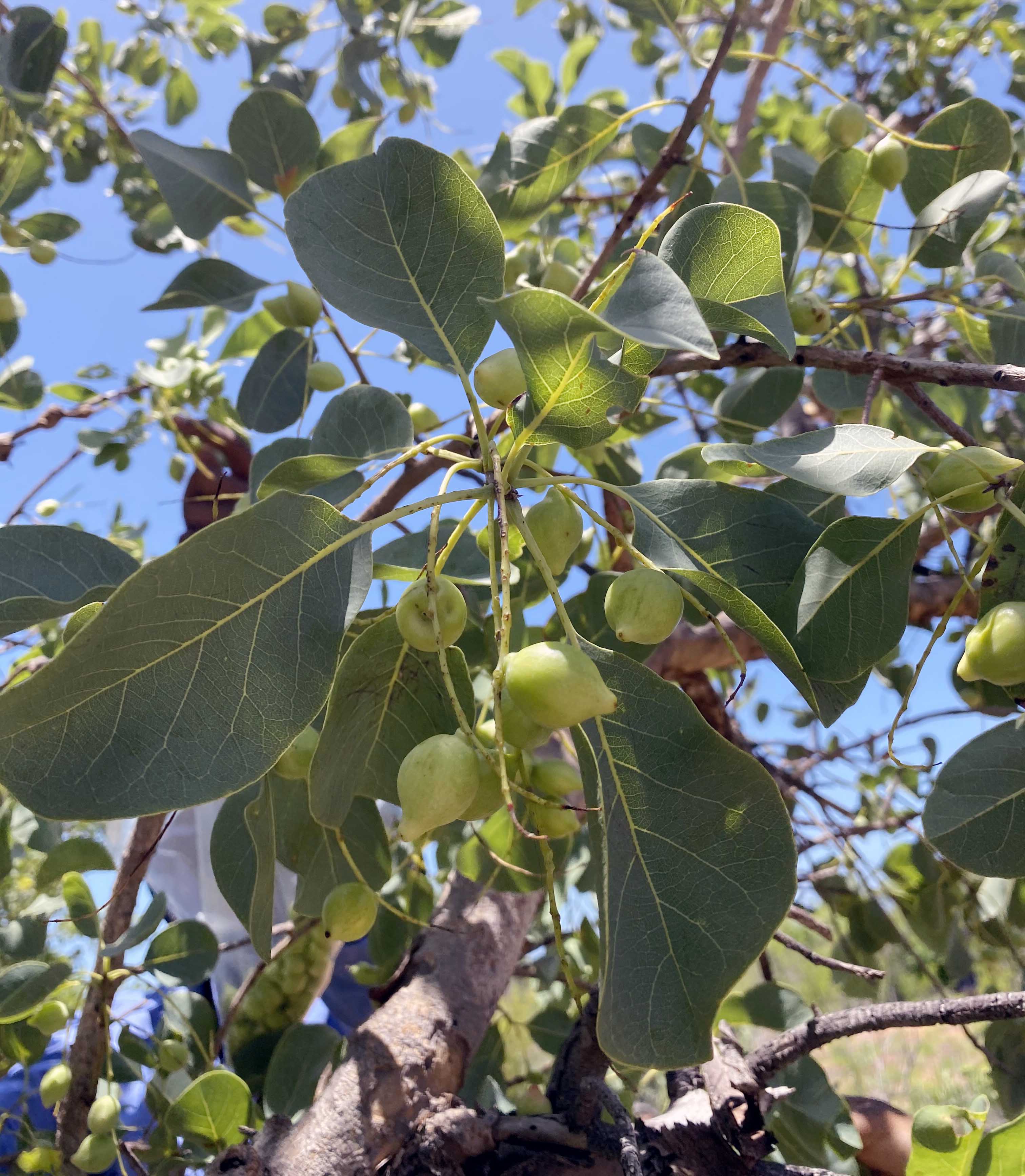
Today is another sample collection day. We head off to Minryirr Park at the Yawuru Conservation Estate. We meet up with Preston a ranger from Parks and Wildlife Kimberley who takes us to a different location within the park. ‘Beware of the snakes, spiders and scorpions’ - he says!! This freaks me out a little. I am scared of all three!! Thankfully, we do not encounter with any of these three species. However, we do encounter march flies a lot as they do not seem to care about the insect repellent at all. Despite a number of bites all over, the harvest goes wonderfully.
After the harvest, Yasmina and Peter go to speak to Sandy Dann, one of the leading Aboriginal broadcasters at ‘Radio Goolarri’. Sandy has been broadcasting for 40 years and is a favourite morning broadcaster for many people in the community. Her broadcast is aired through the PAKAM (Pilbara and Kimbertley Aboriginal Media) network and all around Australia through the National Indigenous Radio Service. That evening we head down to Metso’s a brewery and restaurant. The seafood is amazing. Some of us try the mango and chilli beer from the brewery, it tastes as amazing as it sounds. Intense chilli flavour that stays on your pallet with a slight sweetness and cooling from the mango. Eshetu and Adiamo both say they enjoy the vibe. And I agree. We go for a walk after our dinner and head home.
Day 6: January 31, 2020
On the morning of Friday, Robert Dann from ‘Kimberley Cultural Adventures’ comes to take us on a cultural tour on his bus. He takes us on an incredibly informative journey through the history, culture and beauty of Broome. He also shares some personal stories and shows us places where he spent his time as a child, where he dived with his cousins. Some stories pull at our heartstrings. For the last leg of the tour, Robert takes us to Gantheaume Point. He gives some tea and freshly made boab damper with butter, jam and pesto made with boab leaves. Afterwards, Robert shows some aboriginal artefacts, some of them carved by himself. Then we go for a walk near the beach, to see the dinosaur prints. He also shows us how to make red, yellow and white Ochre (natural pigments that have significant meaning to Aboriginal communities of Australia). We all sit for a while near the beach enjoying the contrasting red rugged rocks and the blue of the ocean.
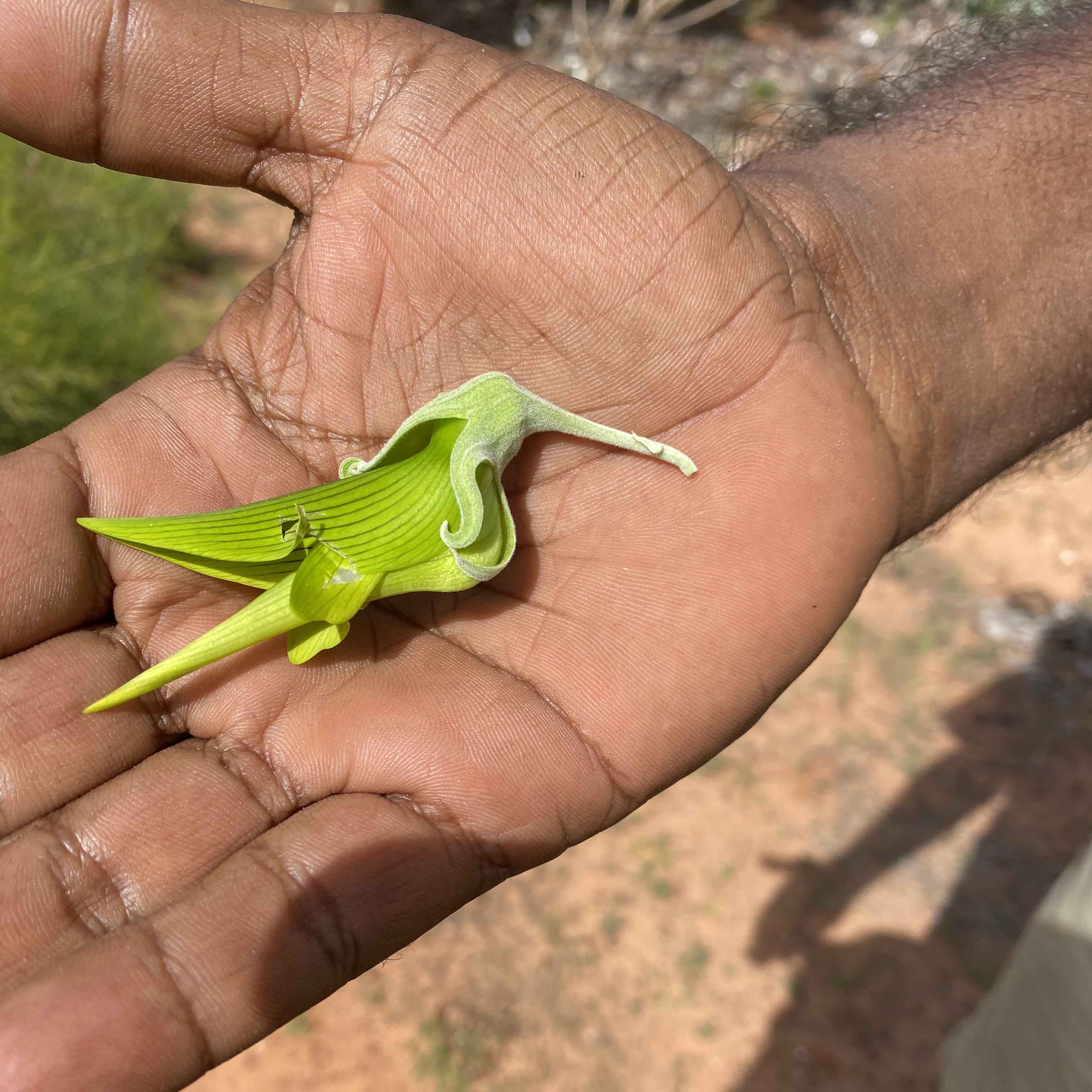
We end our tour with a group lunch and say our goodbyes to Robert. During his tour he suggested visiting the Sisters of St Johns of Gods Heritage Centre, which shares the history of the Sisters of St John of God and Aboriginal people of the Kimberley. Unfortunately, the centre is open only during the tourist season, so we could not visit the Relationships Exhibition in the Old Convent. But the Garden of Healing is still open to the public. Thanks to the information boards located in the Garden, we get to know a bit more about these Sisters. They came from Ireland in 1907. They looked after the Aboriginal children from the Stolen Generation, who were housed here, and looked after the leprosy patients in quarantine centres. There is something spiritual about this place and we all can feel it.
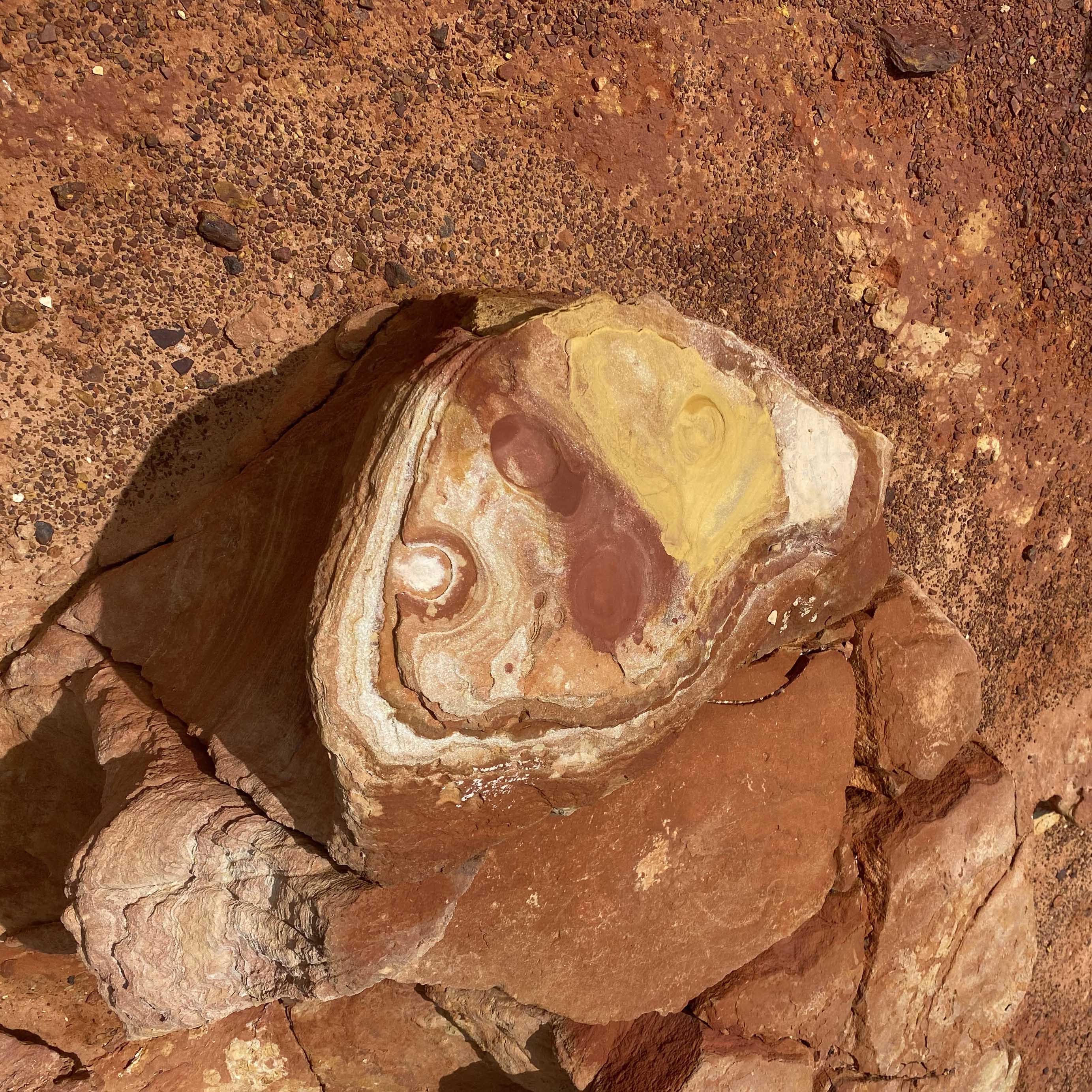 After spending some time here, Peter suggests that we should try the ‘Maca’s Takeaway’. Maca’s is not short for of McDonald's, but it’s a popular Fish and Chips shop in Broome. I remember Robert suggesting it too during our lunch together. On the way to Maca’s, Peter talks to Kevin Fong. Kevin’s family owns a popular convenience store called 'Fong’s Store’. Apparently, it’s just next door to Maca’s. Peters informs that Kevin would like to meet us first before we visit the shop.
After spending some time here, Peter suggests that we should try the ‘Maca’s Takeaway’. Maca’s is not short for of McDonald's, but it’s a popular Fish and Chips shop in Broome. I remember Robert suggesting it too during our lunch together. On the way to Maca’s, Peter talks to Kevin Fong. Kevin’s family owns a popular convenience store called 'Fong’s Store’. Apparently, it’s just next door to Maca’s. Peters informs that Kevin would like to meet us first before we visit the shop.
That’s how we meet Kevin Fong, who is having a lovely Saturday evening by the pool with his family and friends. We are met with warm greetings. Kevin has a unique mixed heritage much like the town of Broome itself. He is a highly respected member of the community has been a President of the Shinju Festival, managing director of Goolarri Media and a president of Broome Shire. Kevin’s grandfather Fong Sam and father William Fong were legendary pioneers of Broome.
Kevin is passionate about the welfare of his community. He tries to understand how our research can contribute positively to the welfare of his people. After listening to us he says, “I have ‘liyan’ about you guys”. We are told by Peter, ‘liyan’ means ‘good feeling’. We are so moved by his opinion and humbled. He describes how his family and friends (present at the table) live close by, and their children can safely roam from one house to another through their backyards. This is such a reminiscent of my childhood, when my brother and I could move through the backyard gates to our neighbours’ houses to play with our friends.
Kevin calls Maca’s, and orders fish and chips on our behalf. Although we only met Kevin and his family once, we felt as if we have known him for a long time. We promise to come back and visit him again when we are in Broome next time. We visit his shop, ‘Fong’s Store’ and met with his brother Graham Fong. We can see the shop is a culmination of Western and South-East Asian and Aboriginal food items just like ‘the Fongs’. One of the delicacies in the freezer is kangaroo tail.
We take our takeaway to ‘Broome Town Beach’ to enjoy the meal while under the night sky. We go for a walk on the luscious grass. It was such a wonderful day. I smile all the way home till I fall asleep.

Day 7: February 2, 2020
After a light breakfast, we visit the ‘Broome Historical Society & Museum’. We spent a couple hours looking at the collections that tell a story of a rich heritage and history of Broome. They have a magnificent collection including an impressive Sailmakers Shed. We then visit the Broome Courthouse Markets, taking a stroll through the little stores. We buy some pearls and other gifts for our families back home and enjoy some Indonesian meal at one of the stalls.
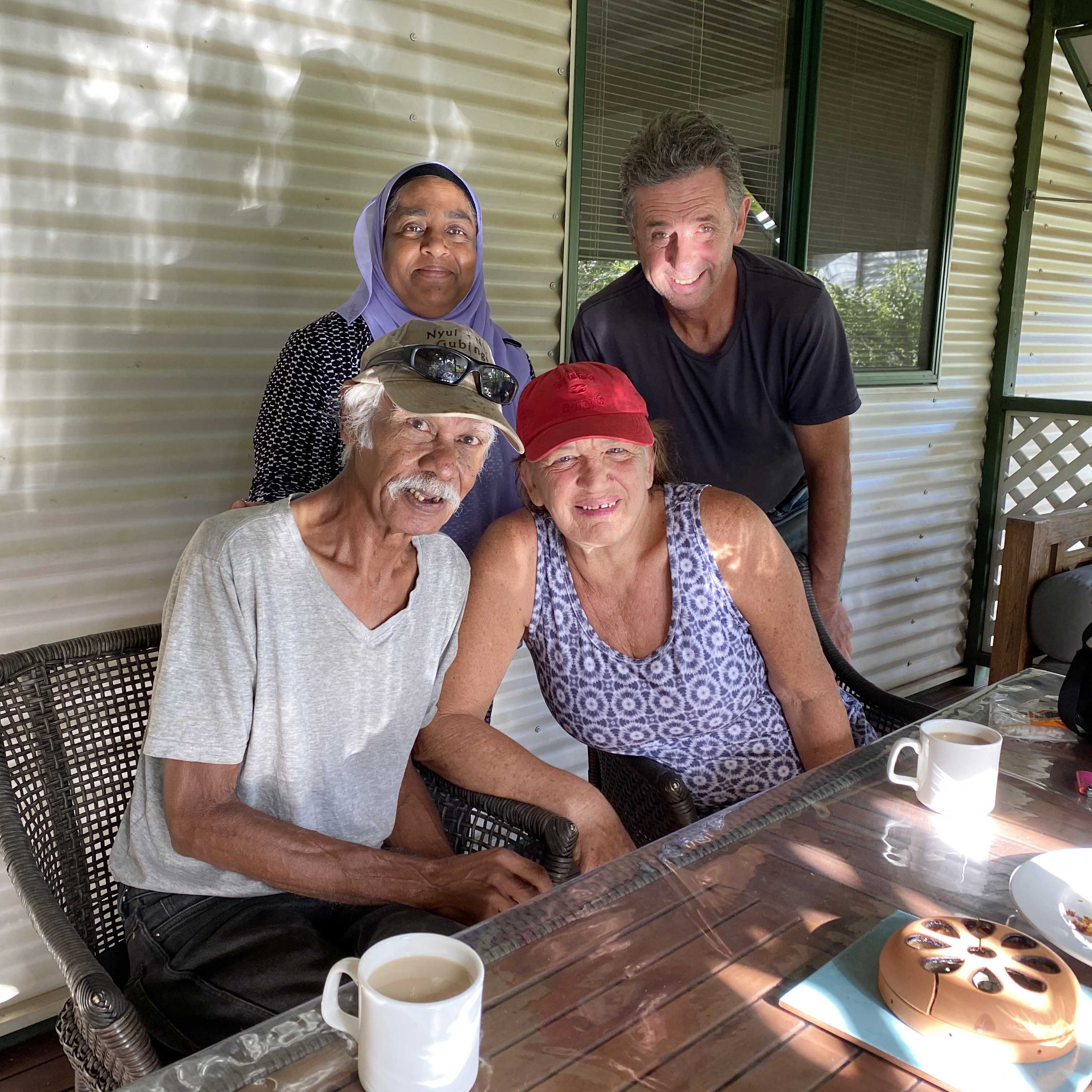
In the afternoon, Bruno Dann and his lovely wife Marion Manson from Twin Lakes Cultural Park and Nyul nyul country, come to visit us. Over some afternoon tea and cake, they share their experience from the gubinge harvest this year. They share the stories of how the harvesting has helped a teenager to save enough money to buy her shoes, helped someone to save for a car, and someone could pay off their debt. It was heart-warming and inspiring.
Day 8: February 1, 2020
Day 8 is a bit bitter-sweet for us. We are happy to be reunited with our families back in Brisbane, but also a little sad. As we leave behind the sand dunes, ochre red cliffs and the azure waters of Broome, my heart aches a little. I feel as if I am leaving my family back in North East India again. The beautiful people of Broome who are as colourful and diverse as its natural beauty will live forever in our hearts. We promise each other that we will be back once again to immerse in all that Broom has to offer.
CONTACT: Dr Mridusmita Chaliha Research Officer, Centre for Nutrition and Food Sciences, Queensland Alliance for Agriculture and Food Innovation, The University of Queensland E. m.chaliha@uq.edu.au or T. +61 7 344 32474.
[All images in this story are by Dr Smita Chaliha]

